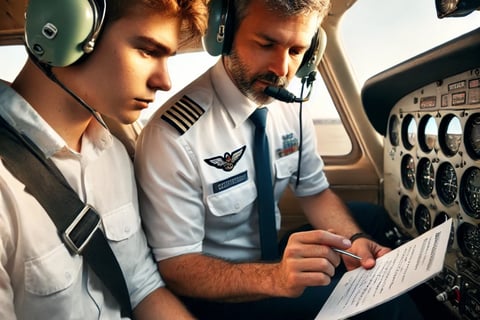
Smaller Aircraft and The Checklist Trap
Smaller, less complex aircrafts often encourage a sense of ease, tempting pilots to skid written checklist.
In the world of aviation, the complexity of flying varies widely across different types of aircraft. While advanced systems and automation have made flying more accessible, they can also foster complacency, especially when pilots operate less complex aircraft. This article focuses on the importance of maintaining vigilance and the dangers of relying solely on memory instead of using a checklist, which can trap pilots into an “automatic mode” that can be perilous.
Understanding Automatic Mode
In aviation, “automatic mode” refers to a mental state where pilots rely too heavily on routine or their memory to perform tasks with minimal active engagement. This mindset is particularly tempting in smaller aircraft with simple procedures, where some pilots might forgo a checklist and trust their memory for a quick 5-step start-up or flight procedure. While these habits seem convenient, they can lull pilots into a false sense of security, leading to reduced attention to detail.
The Checklist Trap
Smaller, less complex aircraft often encourage a sense of ease, tempting pilots to skip written checklists. After all, how hard is it to remember five or six steps? However, this casual approach can lead to falling into “automatic mode.” The danger arises when the pilot, confident in their memory, overlooks a small but critical detail, like confirming fuel levels or checking control surfaces. This is how automatic mode can trap a pilot, turning a seemingly simple flight into a risky situation.
The Risks of Complacency
Operating in automatic mode without a checklist can lead to dangerous complacency. Overconfidence in one’s memory or routine can cause critical oversights. A simple missed step can cascade into bigger issues, especially during critical phases of flight like takeoff or landing.
For instance, consider the start-up procedure: skipping the checklist and relying solely on memory might work most days, but eventually, a missed item, such as a fuel valve left in the wrong position, could lead to a serious problem. This complacency is where even experienced pilots are at risk of making small errors that have significant consequences.
Why Checklists Matter
Checklists are designed to prevent these very mistakes. They serve as a structured safeguard, ensuring that every step is accounted for. No matter how simple or routine a procedure may seem, having the checklist in hand and actively engaging with it forces a pilot to remain fully aware and mindful of each action.
Here’s why active checklist use is essential
The use of checklist reduces errors by eliminating the need to rely on memory, ensuring no steps are missed. In high-stress or high-workload situations, memory can fail, but a checklist is always there as a backup.
Actively using a checklist keeps pilots engaged in the process by maintaining vigilance. It is a mental shift from “automatic mode” to active awareness, ensuring focus on the task at hand and improves in safety. Checklists aren’t just about going through motions, they are a proven safety tool, especially for smaller aircraft, airplanes and helicopters, where one minor oversight can escalate into a serious issue, staying engaged and avoiding automatic mode.
Avoid falling into the trap of automatic mode
To pilots falling into the trap of automatic mode pilots should always use a checklist, it is highly recommend, even for familiar and simple procedures. Aways follow the written checklist and don’t rely on memory alone, no matter how routine the task may feel. As a pilot you should be active engaged and don’t let the simplicity of smaller aircraft breed complacency and while staying mentally engaged with every step, checking off items and verifying the aircraft’s status maintain situational awareness and Regularly scan the cockpit, instruments, and surroundings, continuously monitoring to ensure that no detail is overlooked.
While mental checklists are a must, reinforce them with written ones to help solidify each step. The use of mental and written checklists together fosters awareness and sharpens focus.
Conclusion
Automation and simplified procedures may ease flying in smaller aircraft, but they should never replace active engagement and vigilant checklist use. Falling into automatic mode and relying on memory alone can lead to dangerous complacency, increasing the risk of errors. By consistently using checklists, pilots can break free from automatic mode, maintaining the highest levels of safety and professionalism.


